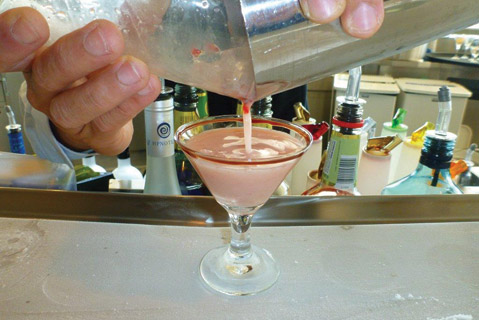Ballots, Bullets, and Booze
Wet Times and Dry

Too Darn Dry: If Election Day drove you to drink, you’d have found countless watering holes in Santa Barbara County where you could drown your sorrows or toast victory. But not in booze-banning states like Kentucky and South Carolina, where you can’t wet your whistle while the polls are open.

In Kentucky, State Representative Arnold Simpson has been trying for years to get John Barleycorn legalized on voting day and vows to try it again. Even he-man Alaska and Massachusetts ban election-day alcohol while polls are open, but there are exceptions for local wet areas and hours, so with a little effort you can get around that.
Much of this dates back to when saloons doubled as polling places and candidates found it convenient to trade beer for votes. Then there was the Anti-Saloon League fervor in the 1800s and early 1900s, where gangs of wives took hatchets to beer barrels, a moral crusade that led to that well-intentioned but dismal failure, Prohibition, 1920-1933.
Prohibition may not have stopped the drinking, but it did pave the way for an era of crime and corruption led by mobsters like Al Capone. Working men who just wanted to stop at the corner saloon before heading home to the wife and kids found themselves breaking the law and dodging gangsters’ bullets.
So what’s the big deal with booze? Today, the 50 states are a crazy quilt of liquor repression, alcohol deemed okay in this “wet” county but not in this “dry” town. Not on Christmas or Easter in some places, never on Sundays or Thanksgiving here but okay there. In 1874, the California Legislature in its wisdom gave each town the right to permit grog shops, or not. When Santa Barbara was incorporated in 1850, of the first 32 business licenses issued, 30 were for “dealers in spirituous liquors,” according to historian Walker Tompkins.
Santa Barbara’s wet-or-dry election was set for June 1, 1874, and the Women’s Christian Temperance Union led a mighty army lobbying for the dry vote, replete with prayer meetings seeking divine help. At a standing-room-only mass rally at the Lobero, the men who went good-naturedly took part in the singing of “Lips That Touch Liquor Shall Never Touch Mine.” Yet the male citizenry in general paid little heed to the mostly female politicking.
On Election Day, women set up a snack bar on the porch of the Aguirre Adobe, next to the Carrillo Adobe polling place, and served free sandwiches, cold cuts, boiled eggs, cake, and coffee, along with a lecture on the evils of demon rum, Tompkins wrote. As dusk approached, bartenders grew worried. They sent wagons around town to round up drunks from saloons and get them to the polling places in a frantic attempt to stem the tide. But at 9 p.m., after the polls closed and the votes were counted, church bells rang out. The dries had won! In two weeks, the beer halls would have to close down or serve soft drinks. Dries also scored victories in Carpinteria, Goleta, Santa Maria, and Montecito.
But the women’s victory was as short-lived as a pail of beer at a poker game. The California Supreme Court soon ruled that the so-called “local option” law was unconstitutional. Booze could flow unhampered up and down State Street.
Lompoc was founded in 1874 as a temperance colony, and women resorted to outright violence to try to keep it dry. A group of them raided Green’s drugstore in 1875, smashing barrels and draining bottles. On May 20, 1881, a mysterious explosion demolished Walker’s Saloon. On another occasion, according to legend, women again took matters into their own hands, stretching a rope around a suspected booze hall and somehow dragging it a half-block, drenching the ground with alcohol. The owners sued a leading male citizen for damages but lost in court. In 1888, Lompoc was incorporated as a city, and temperance law went down the drain.
Sweet Music: Camerata Pacifica founder Adrian Spence, whose concerts recently featured a marimba, knocked us over last weekend at Hahn Hall with another instrument that’s too often in the background, a harp, played beautifully by Bridget Kibbey. Not just one piece, but Debussy, Caplet, Jolivet, and Ravel. Then the Santa Barbara Symphony, at the Granada, performed Debussy’s Prelude to the Afternoon of a Faun, a hauntingly beautiful piece featuring a master of the flute, Demarre McGill.
Drowsy Chaperone: Some of the best local theater treats come from our high schools. Santa Barbara High’s The Drowsy Chaperone, directed by Otto Layman, had me laughing Saturday night. Cleverly done. Great dance numbers. (Thu., Nov. 15, through Sat. night.)



